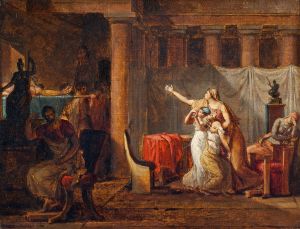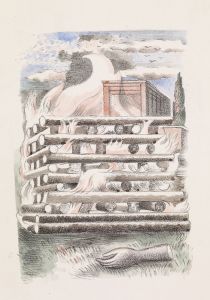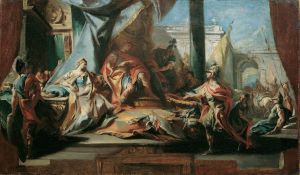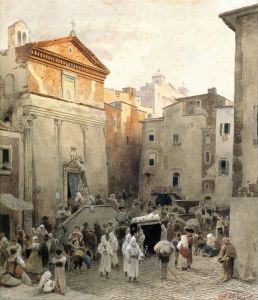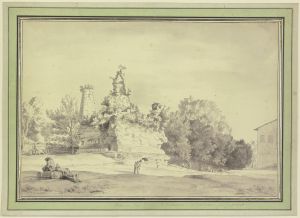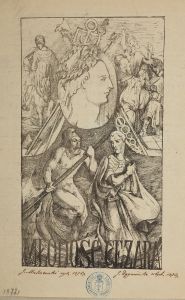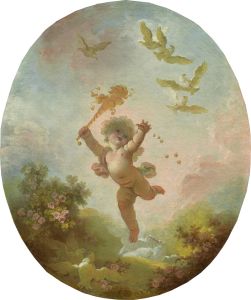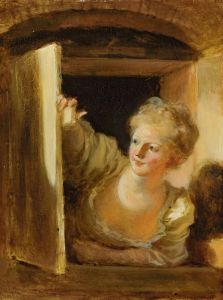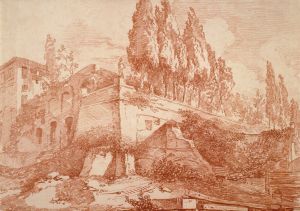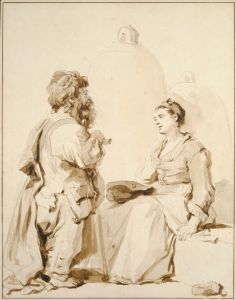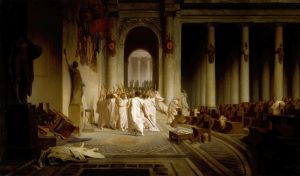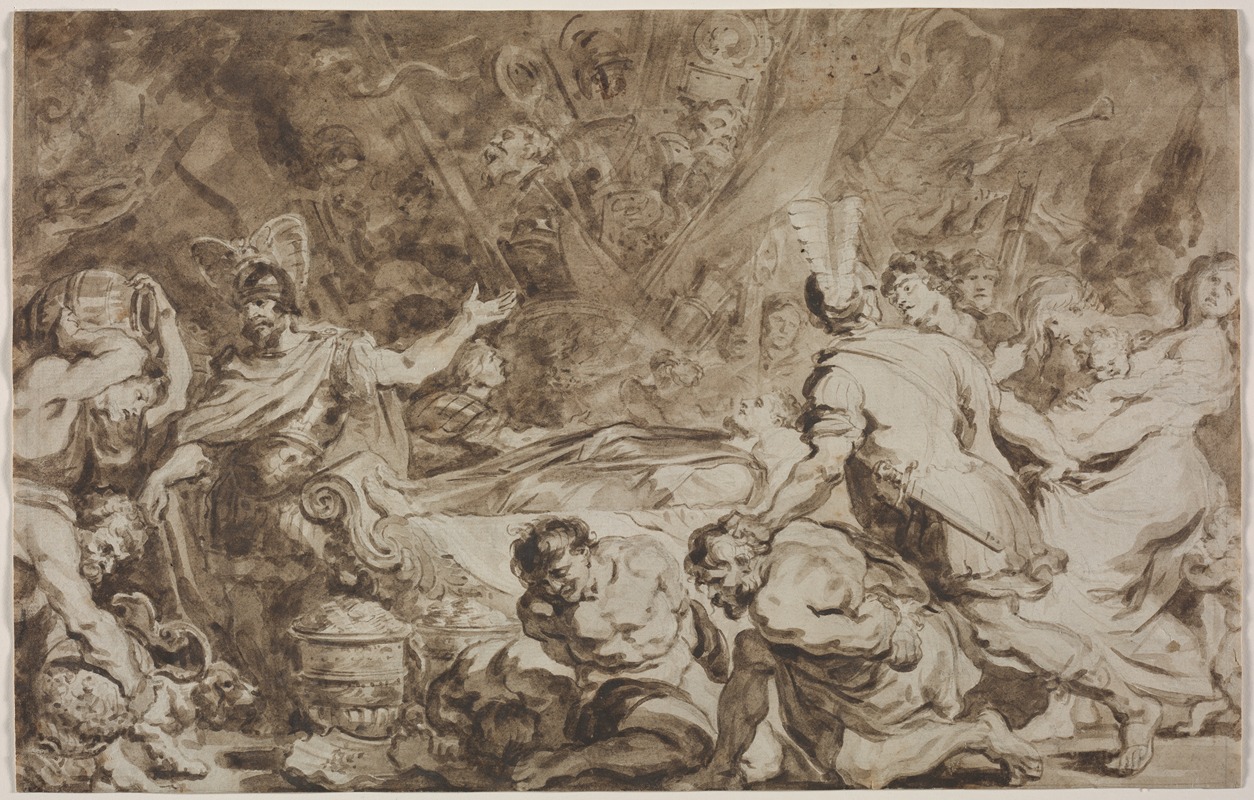
The Funeral of Decius Mus
A hand-painted replica of Jean-Honoré Fragonard’s masterpiece The Funeral of Decius Mus, meticulously crafted by professional artists to capture the true essence of the original. Each piece is created with museum-quality canvas and rare mineral pigments, carefully painted by experienced artists with delicate brushstrokes and rich, layered colors to perfectly recreate the texture of the original artwork. Unlike machine-printed reproductions, this hand-painted version brings the painting to life, infused with the artist’s emotions and skill in every stroke. Whether for personal collection or home decoration, it instantly elevates the artistic atmosphere of any space.
Jean-Honoré Fragonard, a prominent French painter of the Rococo era, is renowned for his exuberant and hedonistic style, often characterized by vibrant colors and fluid brushwork. However, his work "The Funeral of Decius Mus" is less known compared to his more famous pieces like "The Swing" or "The Bolt." Unfortunately, there is limited information available about this specific painting, and it is not widely documented in art historical records.
Fragonard was born in 1732 in Grasse, France, and became one of the most prolific artists of his time. He studied under François Boucher, another leading Rococo painter, and later won the prestigious Prix de Rome, which allowed him to study in Italy. This experience significantly influenced his artistic development, as he was exposed to both the grandeur of classical antiquity and the works of the Italian Renaissance.
The subject of "The Funeral of Decius Mus" is rooted in Roman history and legend. Decius Mus was a Roman consul who, according to legend, sacrificed himself in battle for the greater good of Rome. This act of self-sacrifice was seen as a noble and heroic gesture, embodying the Roman virtues of duty and patriotism. The story of Decius Mus has been a popular subject in art and literature, symbolizing the ultimate act of devotion to one's country.
While Fragonard's oeuvre is predominantly associated with light-hearted and romantic themes, his choice to depict a historical and somber subject like "The Funeral of Decius Mus" suggests a departure from his typical style. This painting would have required a different approach, focusing on the gravity and solemnity of the event rather than the playful and sensual elements seen in his other works.
Unfortunately, due to the scarcity of information and the lack of surviving records or detailed analyses, it is challenging to provide a comprehensive description or interpretation of "The Funeral of Decius Mus." It is possible that the painting was either lost, remains in a private collection, or was a lesser-known work that did not gain significant attention during Fragonard's lifetime or thereafter.
In conclusion, while Jean-Honoré Fragonard is a celebrated figure in the Rococo movement, known for his lively and ornate compositions, "The Funeral of Decius Mus" remains an elusive piece within his body of work. The limited information available about this painting highlights the challenges art historians face in reconstructing the complete catalog of an artist's work, especially when dealing with lesser-documented pieces.





